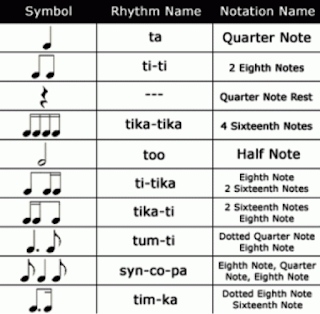Some Quick Breathing Exercises to Build Your Control and Stability
Here are SIX breathing exercises for strengthening your Breath "Control". This is a tricky subject because on the one hand, you want to be relaxed from torso to chin BUT you will need to maintain a certain degree of "tension" in your Diaphragm in order to have great Control over your breath stream. These exercises should be carefully done so that you are able to MAINTAIN a RELAXED posture ABOVE the Diaphragm, while becoming more and more aware of controlling the tension and control of your Diaphragm and abdomen as it contracts and moves. Should you begin to experience tension in your throat, you need to stop the exercise, relax, and start again once you have been able to get back to a composed and flexible posture. Each of these exercises are performed using a form of the "s-s-s-s-s" consonant sound.
- This first exercise begins with an inhale and on the exhale, intone a constant, SOFT, STABLE "ssssssss", as if you were a snake. Begin with 3-5 seconds, unless you notice tension. Your inhale should always be to a count of 5. Your exhale can then begin with the "ssssss" to a count of 5, then 10, then 15, and so on. However, the inhale value should not change. It is unrealistic to think, as a singer, that you will have, honestly, even 5 seconds to breathe but certainly no longer.
- Exercise two is the same as Exercise one except that the "ssssss" is LOUD and STABLE. This will require a greater volume of air, so please beware of tension and do not attempt to progress beyond any level that causes any degree of stress in your throat. The progressions, however, can occur just as in Exercise one.
- Exercise three is a Staccato version of the "sss" sound, "ss-ss-ss-ss-ss-ss-ss-ss..." No volume level is stipulated for this particular exercise but the progressions are to follow and grow or be maintained as with exercises one and two. "Staccato" means detached and disconnected. However, it does NOT mean to sing so disconnected that you take breaths between articulations; it is learning to articulate a "connected" sound, as opposed to a disconnected one.
- Exercise four begins combining elements of the earlier exercises. For this particular one, begin by taking your inhale to a count of five and on the exhale sing "ssss" softly" but then, Crescendo (get louder) to a Loud "ssss". As in earlier exercises, after your 5-count inhale, begin with a 5-count exhale, doing the SOFT to LOUD technique. Once you are comfortable with the 5-count exhale, extend it, as earlier, to 10-count, 15-count, or even 20-count. To make this exercise even more effective and challenging, you can also change up the combination of the soft and loud "ssss" sounds. Though you may not realize it, this is replicating activity you will do in actual songs.
- Exercise five is another combination. This one begins with the Staccato "ssss" sound and moves into the SOFT "ssss". Again, after your inhale, you begin with a 5-count exhale and gradually extend that as you are comfortable. This one can also be made more challenging by alternating back and forth between the Staccato and Soft "Legato" (stable and steady) versions of "ssss".
- Exercise Six combines all of the elements from the above exercises. After your successful inhale, as you begin to exhale sing the Staccato "ss-ss-ss-ss..."into the SOFT "ssss" into the LOUD "ssss".


Comments
Post a Comment